Heating systems for the home: how to get a warm and
One of the advantages of your own home is the complete freedom to choose the plan of construction, area, number of floors and, most importantly, the type of utilities used. Among the latter, the most important is the heating system at home, on the variety of which depends warmth and comfort during a long and frosty domestic winter.
And home craftsmen who want to build a home with their own hands, and people who prefer to hire experienced workers, will find the following instructions for choosing a climate network useful.
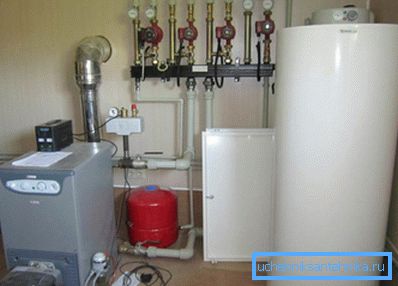
Varieties of heating networks
Immediately it should be noted that this material will deal exclusively with the methods of heating private houses, regardless of the area and the number of floors. At their designing the special equipment intended for individual use is used.
As for urban apartments, heating is settled there in a completely different way. For example, the heating system of a 5-storey building consists of an elevator hub, risers and radiators, into which coolant is supplied centrally. Therefore, many of the elements necessary for a private cottage, in a city apartment is simply not needed.

So, consider the most popular home heating systems.
Water heating
With the help of such climate networks, equipped with a heating boiler and radiators, most houses, both private and multi-family, are heated. Water heating system in the house is so named because for the transfer of heat energy it uses liquid heat carrier - water or special antifreeze.
The main elements of the described engineering network are:
- Boiler. In it, the thermal energy generated from the combustion of a certain type of fuel (gas, diesel fuel, firewood, etc.) is transferred to water, which distributes it to all the rooms in the house.
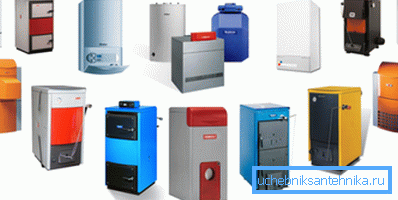
- Radiators. These are special elements made of various materials with a high thermal conductivity coefficient (cast iron, steel, aluminum) in which secondary heat exchange takes place - water heated by the heating boiler gives energy to the room air.
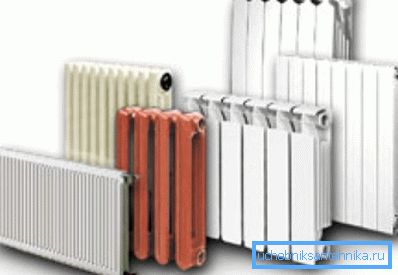
- Additional elements. This category includes an expansion tank, a circulating pump, air valves, valves and other seemingly trifles, without which the engineering network cannot function.
There are two main types of water heating networks:
- forced - the flow of fluid is organized using a special circulation pump,
- gravitational - here water or antifreeze flows through pipes and radiators in a natural way, due to the difference in temperature and density of the liquid.
Note! The advantage of the described climate network is that it gives the opportunity to precisely regulate the microclimate in all rooms. The most economical and efficient heating system is Smart Home. With its help, you will not only achieve maximum comfort, but also you will be more economical to use energy carriers, the price of which is quite high.
Heating with forced circulation of coolant
In this case, part of the heating system is a circulation pump, which is installed on the pipe that supplies the cooled water to the boiler. The use of this electrical equipment allows you to organize a faster flow of fluid through radiators, which has a positive effect on efficiency.
The disadvantage of such a decision is the need to purchase a pump, as well as dependence on energy supply. If for some reason electricity is turned off, you will be left not only without light, but also without heat.
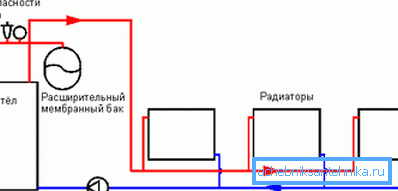
To avoid such trouble, the following is recommended:
- install an uninterruptible power supply or a diesel generator in the boiler room, which will ensure the operation of the heating system in the event of a power line break;
- install a pipe bypass around the pump — a bypass — through which water will flow when the electrical equipment is stopped.
Note! In the latter case, all pipelines must be laid according to the rules of the gravity system - with a bias towards the boiler. Only in this case, the liquid will flow in the right direction.
Heating with natural coolant circulation
This climate system operates using the immutable and well-known laws of physics.
The scheme of work is as follows:
- the liquid, when heated, becomes less dense and, accordingly, its weight decreases;
- heavier and colder water masses coming from radiators force hot water to the top of the system;
- from there, along pre-laid pipelines, coolant is distributed to all radiators of heating.
The use of a gravitational heating system at home can significantly reduce the cost of its design and operation. You do not need expensive electrical equipment, and heating will always work (unless, of course, for the operation of the boiler itself does not require electricity).
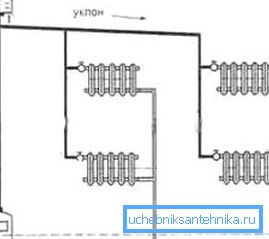
The disadvantage of this solution is low efficiency. If the area of the house exceeds 200 square meters. meters, use the technology described above is impossible. For this reason, for example, the heating system of a three-story house can only be designed using pumps.
Air heating
Heating of dwellings with the help of air is not yet very common, but it is gaining more and more popularity. The bottom line is that to increase the temperature of the air in the rooms, warm air is used, heated by individual heaters or supplied through pre-laid ventilation ducts.
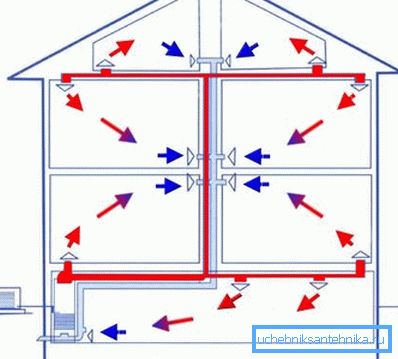
The advantages of this solution are obvious:
- low inertia of the system - after a few minutes after switching on the units in the rooms, it becomes noticeably warmer;
- the ability to accurately regulate the microclimate in the rooms - by increasing or decreasing the power of the air flow, you can install the most comfortable microclimate in the rooms;
- no heat transfer fluid - if a heater fails or you simply turn off the heating for some reason, you do not need to drain water from the pipes, as in a water heating system.
Minus - the complexity of installation. It is necessary to design the installation of such a system even at the project development stage, since after the construction of the house it will be very difficult to lay ventilation ducts in the rooms.
Another important point. Air flow through the rooms reduces humidity and raises large amounts of dust. Therefore, to feel as comfortable as possible, you need to provide for the installation of additional filters and humidifiers.
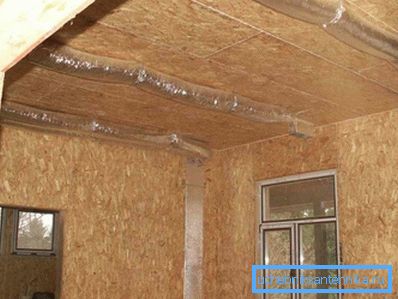
As in the case of a water-based climate system, there are several ways of organizing home heating with the help of warm air. Let us dwell on each of them in more detail.
Local fan heaters
This scheme can not be called a full-fledged heating. It is often used as an additional or backup method of heating rooms. In this case, special fans are installed in each room, which allow the air flow through it, simultaneously heating it.
The disadvantages of the local heating scheme are obvious:
- the inability to centrally regulate the temperature in the rooms;
- a strong decrease in humidity in the rooms of the house;
- noise during operation of thermal fans.

In addition, open doors and windows will become a source of large heat losses, which greatly affects the efficiency of the selected heating method.
Centralized heating and air supply
Heating is carried out centrally, and then through the channels laid in the walls, ceiling and floor, air is supplied to the rooms. There, the hot air masses force out the cold ones, which are returned back to the heater through other pipes. In this way a constant circulation is organized.
There are also open systems when air for heating is taken from the street. There are also options. For example, air heating circuits with heat recuperators are quite effective. In this case, the temperature of the air received from the street, is partially increased by the heat coming out of the premises.
The result is greater efficiency and cost effectiveness.
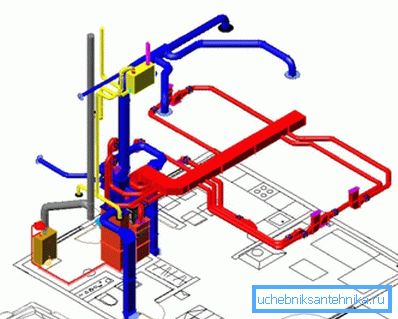
Electric heating
The source of thermal energy used liquid heaters, infrared emitters or convectors. They are installed in any convenient place of the room and are connected to electrical outlets. Are regulated by means of the special control panels installed on each separate device.
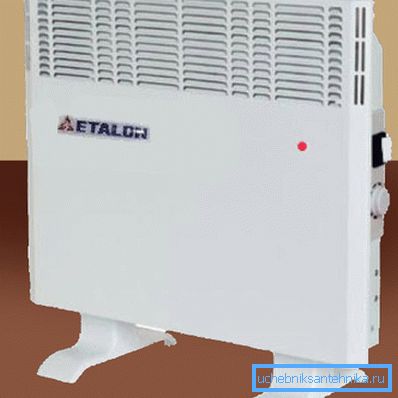
The advantages of such a system are as follows:
- It is mounted as fast as possible. You do not need to install a boiler or an air heater, lay pipes or ventilation ducts, hang batteries, and so on. Simply install the convector and connect it.
- They have low thermal inertia. Heat the room for a minimum period of time from the moment of inclusion.
- Differ in high mobility. If necessary, you can easily move the convector or heater to another room or house.
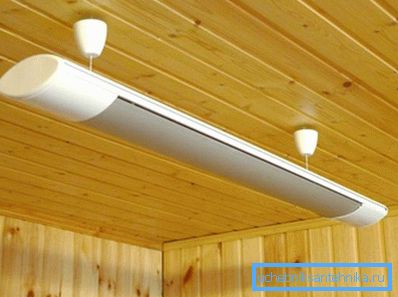
However, several disadvantages prevent the widespread use of this method of heating:
- the high cost of energy - electricity is one of the most expensive types of fuel in our country;
- the need for a powerful electrical network - wiring in homes, especially old ones, may not withstand and melt, causing a short circuit, and possibly a fire.
Floor heating
This system is part of the water or electric heating, however, it is divided into a separate section due to the large differences in installation procedure, operation and efficiency.
The bottom line is that pipes under which hot water circulates are laid under the finishing floor, or special films powered by electricity are laid.

The heating surface in this case is the entire floor, which allows you to get rid of radiators mounted under the windows and ventilation grilles that do not fit into the interior of the premises.
The advantages of space heating with underfloor heating:
- high efficiency and efficiency - given that the cold air always accumulates in the lower part of the room, placing the heating surface here makes it possible to use a smaller amount of fuel to achieve a comfortable temperature;
- large thermal inertia - in case of any accidents of the heating network, the heated surface of the floor will continue to give up the accumulated heat energy to the air in the rooms, not allowing you to freeze;
- Aesthetics - as already mentioned, the use of pipes or electric heaters hidden under the floor eliminates the heat exchanging units visible to the eye, which has a positive effect on the design of the rooms.
As in the systems listed above, it is not without its drawbacks. In particular, the installation of such a system is quite expensive and time-consuming, and repair in the event of a breakdown brings even more headaches.
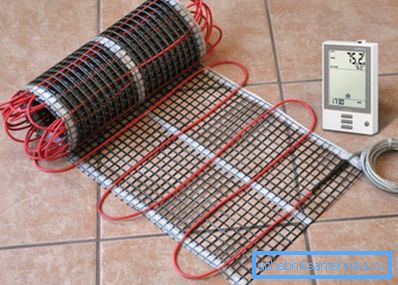
Conclusion
The choice of a heating system for a house is a very important stage when designing a home. Subsequently, after the completion of the work, you will not be able to change the decision taken earlier without a major overhaul. The same applies to other important engineering networks: plumbing, sewage, ventilation and electricity. To learn how to make your own cottage as convenient and comfortable as possible, see the video in this article.